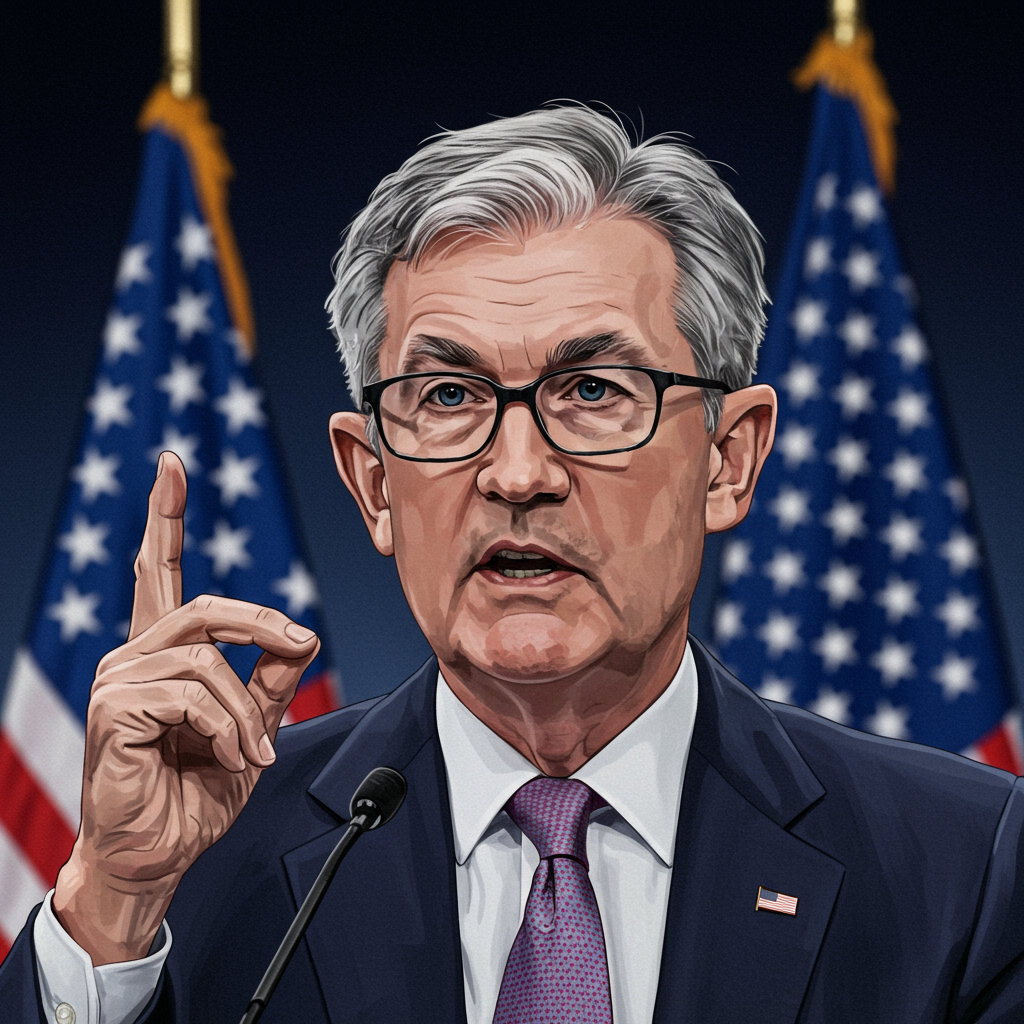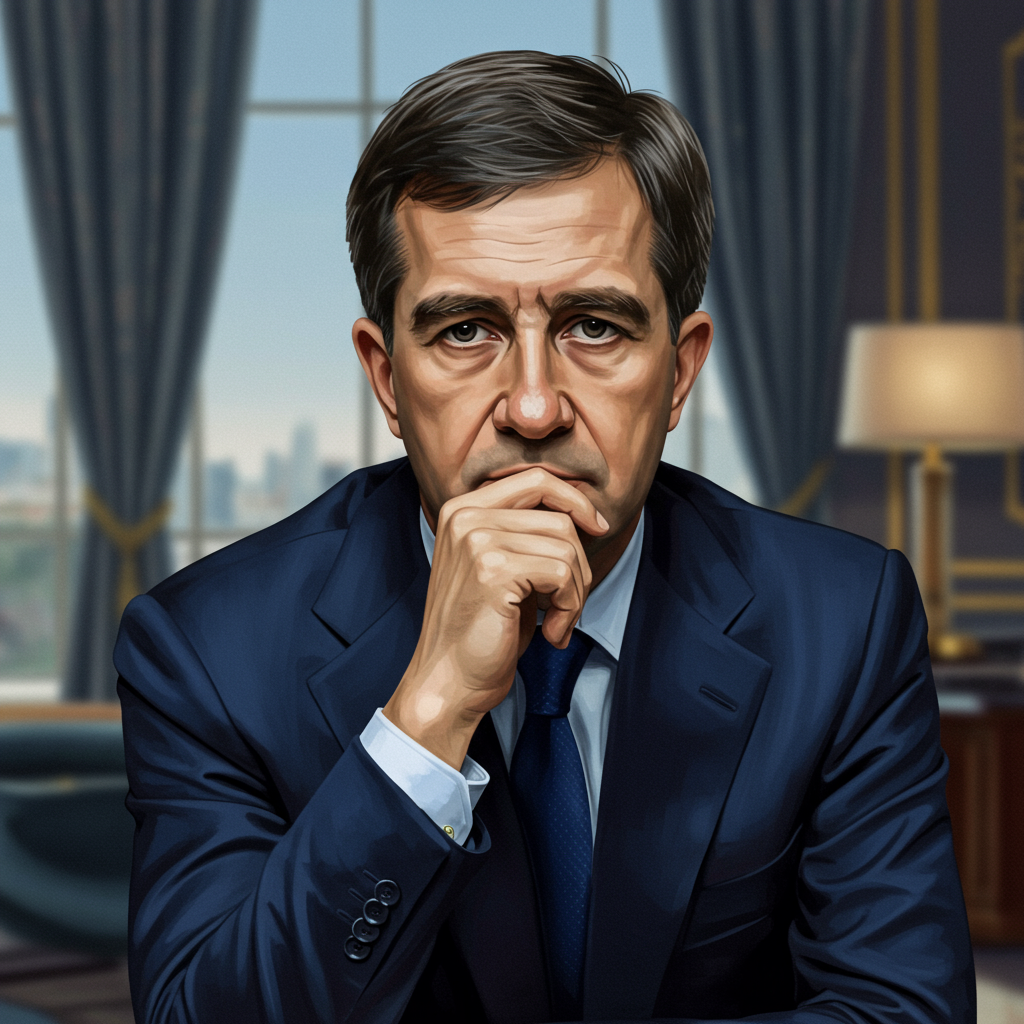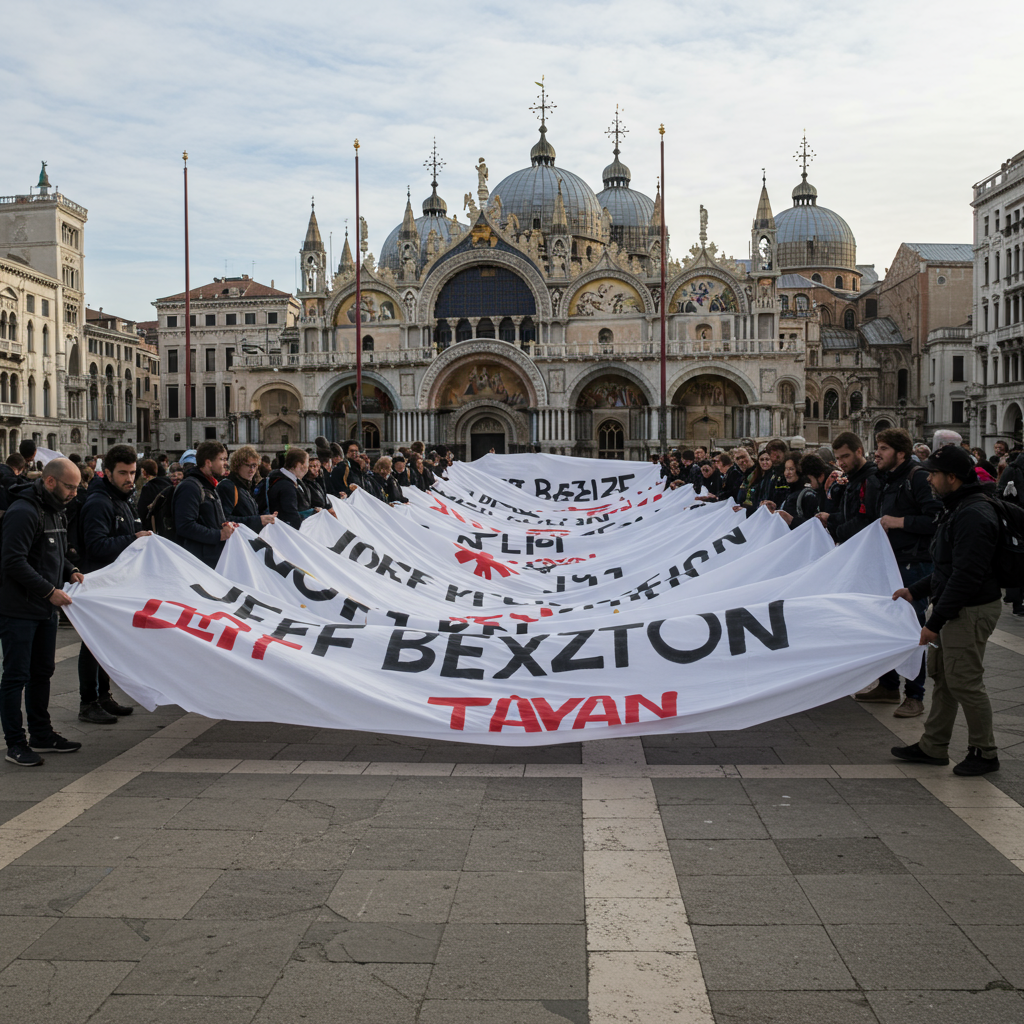The Federal Reserve, under Chairman Jerome Powell, faces an unprecedented challenge: navigating a perilous economic landscape where traditional policy tools seem insufficient. In Washington, D.C., Powell delivered a stark warning, acknowledging the central bank’s precarious balancing act. The Fed is striving to cool persistent inflation without simultaneously undermining a fragile job market. This delicate operation unfolds amidst profound economic uncertainty, largely shaped by sweeping trade and fiscal policies. The chairman’s remarks underscore a growing tension between the Fed’s dual mandate of stable prices and maximum employment, creating a “risk-free path” for decision-makers.
Navigating the Economic Tightrope: Powell’s Stark Warning
Chairman Jerome Powell recently articulated the Federal Reserve’s daunting task. He described a “difficult balancing act” where the Fed must tamp down inflation while simultaneously nurturing the job market. Speaking to the National Association for Business Economics in September 2025, Powell conceded, “There is no risk-free path for policy as we navigate the tension between our employment and inflation goals.” This sentiment reflects a period of heightened caution, particularly after the Fed chose to keep interest rates steady for three consecutive meetings earlier that year, setting the federal funds rate at a target range of 4.25-4.5 percent—its highest level since 2007.
The Dual Mandate in Crisis: Inflation vs. Employment
The core of the Fed’s dilemma lies in its dual mandate. Normally, the central bank aims to achieve both stable prices (low inflation) and maximum employment. However, recent economic conditions have pushed these goals into direct conflict. Powell explicitly stated that the “potential” for both higher inflation and higher unemployment — a scenario often termed “stagflation” — is a primary driver of the Fed’s hesitation to significantly adjust rates. While stagflation hasn’t fully materialized, the risks have “increased,” particularly looking ahead to the next year. This potential for contradictory outcomes makes policy calibration exceedingly difficult, forcing the Fed to prioritize bringing prices in check, echoing painful lessons from the 1980s.
Trump’s Policies: A Disruptive Force on the Economy
Adding layers of complexity to the Fed’s situation are the broad economic policies enacted by President Donald Trump’s administration. His sweeping actions on trade, immigration, and government spending have thrust the world’s most powerful central bank into a tricky situation rarely seen in its century-plus history. Trump’s “America First” stance, particularly his aggressive use of tariffs, has emerged as a central disruptive force. These tariffs have already begun to push up some consumer prices, according to Commerce Department data. Furthermore, a September survey from the National Federation of Independent Business indicated that more small businesses are planning price hikes in the coming months, directly attributing these to rising import costs.
The administration’s unique approach extends beyond trade, as seen in its direct financial interventions, such as the $20 billion “lifeline” provided to Argentina in October 2025. This move, involving currency swaps and direct purchases of Argentine pesos, showcased the administration’s willingness to take “exceptional measures” to stabilize allied economies, even while critics questioned its alignment with an “America First” foreign policy. Such actions, while external to monetary policy, contribute to the overall unpredictable economic environment that the Fed must factor into its decisions.
The Shadow of Stagflation: Why the Fed is Holding Steady
Despite growing recession odds and plummeting consumer sentiment, the Federal Reserve has remained “in no rush” to aggressively cut rates. This patience stems from a deep concern that moving too quickly could reignite inflationary pressures. With current inflation around 2.4 percent, some economists fear it could rise to 4-4.5 percent if tariffs are fully implemented across the board. The Fed is steadfast in its commitment to preventing a one-time increase in costs from tariffs from evolving into a sustained inflation problem.
Tariffs: The Unseen Driver of Price Hikes
Tariffs are not just an abstract policy; they are directly impacting costs at the consumer level. The pass-through of these U.S. tariffs to consumers, though initially slower than anticipated, is now projected to persist well into the following year. This uncertainty around “Liberation Day” tariffs has caused businesses to pause hiring and investment decisions. Consumers, in turn, are “front-loading” purchases to avoid future price hikes, which could ultimately reduce future spending and economic growth. Analysts widely agree that tariffs are the primary reason the Fed isn’t cutting rates more quickly, creating an “uncertain path forward.”
A Weakening Labor Market: Signs of Economic Strain
Compounding the inflation challenge are mounting signs of a weakening labor market. Recent job growth has been anemic, indicating a significant slowdown. People are staying unemployed for longer periods, and for the first time in recent memory, there are now more unemployed individuals seeking work than there are actual job openings. This shift signifies a critical tightening in the labor market. To complicate matters further, a federal government shutdown temporarily suspended the release of most official economic data, which the Fed heavily relies on for informed decision-making. Despite this data blackout, Powell assured that the Fed utilizes “a wide variety of public- and private-sector data” and maintains a “nationwide network of contacts” through its Reserve Banks to gather insights. Based on available information, the outlook for employment and inflation has not “changed much” since the Fed’s September meeting.
Inside the Federal Reserve: A House Divided
The Federal Reserve itself is not monolithic in its approach. Officials are actively debating the best strategy to steer the economy through these turbulent waters. This healthy debate, as Powell termed it, highlights the profound disagreements within the institution. In July, Fed Governors Michelle Bowman and Christopher Waller, both Trump appointees, cast dissenting votes, advocating for a rate cut rather than holding steady – marking the first time more than one governor dissented since 1993. More recently, in September, Governor Stephen Miran, a close Trump ally, pushed for a larger half-point rate cut instead of the quarter-point reduction that ultimately passed.
The Peril of Premature Cuts vs. Painful Delays
Powell outlined the high-stakes nature of these decisions. He warned that moving “too quickly” with lowering rates could leave “the inflation job unfinished,” potentially necessitating a return to tighter policy later. Conversely, moving “too slowly” risks “unnecessary losses, painful losses, in the employment market.” This captures the essence of the Fed’s tightrope: avoiding both an inflation resurgence and a deeper recession. The recent 25-basis-point rate cut in September was the first of the year, made amidst significant political pressure from former President Trump, who had repeatedly criticized Powell for not lowering rates sooner.
Political Pressure and the Imperative of Fed Independence
The ongoing political pressure from the White House adds another unprecedented layer of difficulty. President Trump has consistently called for lower rates, arguing they would support his trade policies and prevent a recession. Experts caution that politicizing the Fed’s decisions is “scary,” as it can undermine confidence, potentially leading to higher inflation and increased interest rates as investors demand greater compensation for holding government debt. Some analysts even suggest the Fed might cut rates more slowly than otherwise, specifically to assert its independence and avoid appearing politically influenced. The Fed’s mandate, established in 1913, is to maintain price stability and maximum employment, not to execute any particular administration’s economic agenda.
Real-World Impact: What Steady Rates Mean for You
The Federal Reserve’s current stance has tangible effects on consumers and businesses alike. While the Fed has extended its pause on rate cuts, many borrowing costs remain elevated, reflecting the highest federal funds rate in years.
Mortgages, Auto Loans, and Small Businesses
Mortgage rates, though not directly set by the Fed, have seen fluctuations. While some recent tariff announcements caused a temporary dip in 10-year Treasury yields (to which mortgages are often tied), rates have since rebounded, with 30-year fixed mortgages averaging around 6.82 percent. An economic slowdown could theoretically lead to lower mortgage rates, but the risk of stagflation complicates this outlook. Similarly, auto loan rates, which have remained steady at 7.3-7.5% APR since late 2024, are more likely to be impacted by tariffs increasing car and parts prices rather than direct Fed action. For small businesses, steady, elevated interest rates mean higher borrowing costs, potentially stalling growth and limiting access to capital. Tariffs further exacerbate this by increasing import costs, forcing businesses to consider new suppliers, pass costs to inflation-weary customers, or accept thinner profit margins.
Credit Cards and Savings Accounts: A Mixed Picture
Credit card rates remain high, near their all-time peak, averaging 20.12 percent despite the Fed’s pause. Some card issuers have quietly increased rates on new customer offers, signaling a “skittishness” due to elevated delinquency rates and recession worries. On a more positive note, competitive savings accounts continue to offer rates that outpace inflation. Even with a slight decrease in top savings APYs (e.g., from 4.54% to 4.44%), current inflation at 2.4% means savers are still earning inflation-beating returns and retaining purchasing power, a much more favorable situation than a year prior.
Beyond Borders: Global Echoes of US Policy
The caution exercised by the U.S. central bank extends beyond domestic borders, impacting economies and businesses worldwide. As U.S. business activity softens and job growth cools, global investors are adjusting their positions in currencies and commodities. Gold, traditionally a safe haven, has seen a modest increase amidst this uncertainty. Powell’s remarks have shifted investors into a more defensive posture, leading to a broad sell-off on Wall Street. Major indices experienced declines, with the Nasdaq slipping 1%, the S&P 500 dropping 0.66%, and the Dow Jones Industrial Average falling 0.25%. Market uncertainty was further underscored by a nearly 6% rise in the CBOE Volatility Index (VIX) to 17.01, indicating that traders are bracing for increased market turbulence. Simultaneously, government bond yields, specifically 10-year Treasuries, edged lower to 4.11%, suggesting that market participants are anticipating slower economic growth. These reactions reflect a market expectation of slower economic expansion and the possibility that the Federal Reserve may need to keep rates “higher for longer” to combat inflation effectively.
Frequently Asked Questions
What does ‘stagflation’ mean in the context of the Fed’s current concerns?
Stagflation is a challenging economic condition characterized by slow economic growth, high unemployment, and rising inflation. In the Fed’s current context, Chairman Powell highlighted the “potential” for this rare and difficult environment, citing concerns that President Trump’s tariff policies could lead to both higher inflation (due to increased import costs) and higher unemployment (as businesses reduce hiring amidst uncertainty). The Fed is actively working to prevent this scenario, which historically proved very difficult to resolve without significant economic pain.
How have President Trump’s economic policies complicated the Federal Reserve’s decision-making?
President Trump’s sweeping policies on trade, particularly tariffs, have significantly complicated the Fed’s role. These tariffs are directly pushing up some prices, creating inflationary pressures while also fostering economic uncertainty that leads businesses to delay hiring and investment. Additionally, Trump’s public pressure on the Fed to lower rates has created a political dimension, raising concerns among experts about the potential for politicization to undermine the central bank’s independence, a crucial factor for maintaining long-term price stability.
What are the key implications of the Fed’s ‘wait-and-see’ approach for consumers and businesses?
The Fed’s “wait-and-see” approach means that while interest rates have been held steady, borrowing costs for things like mortgages, auto loans, and small business capital remain elevated compared to recent years. For consumers, credit card rates are near peak levels, but competitive savings accounts still offer inflation-beating returns. Businesses face higher import costs due to tariffs and must weigh passing those costs to consumers or accepting thinner profit margins. This environment of sustained caution requires both consumers and businesses to adapt by fortifying cash reserves, strategically managing debt, and seeking alternative supply chains.
Conclusion: Uncertainty and the Path Ahead
The Federal Reserve is currently navigating a highly complex and uncertain economic environment, a true tightrope walk between the twin specters of inflation and a weakening job market. Chairman Powell’s warnings underscore the difficulty of avoiding “unnecessary losses” in either domain. The profound impact of President Trump’s policies, particularly tariffs, combined with signs of a weakening labor market and internal disagreements among policymakers, creates an unprecedented challenge for the central bank. While the Fed maintains a “wait-and-see” posture, prioritizing inflation control, investors are cautioned not to expect a quick “rescue” through rapid rate cuts. The path ahead is fraught with risks, demanding continued vigilance and adaptability from both the central bank and the wider economy. The focus remains on strategic patience, aiming to achieve long-term economic stability without triggering a deeper recession or an inflationary spiral.



